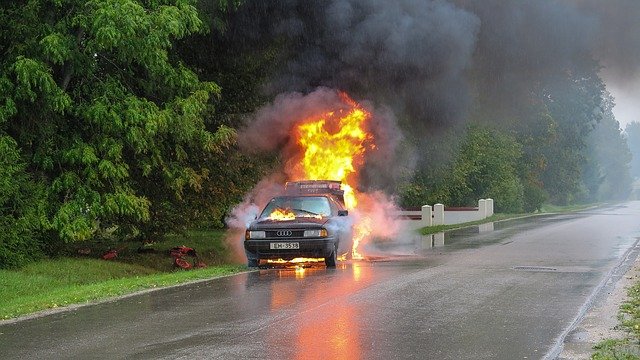What Kind of Accidents Usually Cause Burn Injuries?
Burns are some of the most popular household injuries. One can also sustain burn injuries at a recreational center, or their workplace, e.g. if they work at a garage or restaurant. Burn injuries are grouped into four categories, namely:
- First-degree burns
- Second-degree burns
- Third-degree burns
- Fourth-degree burns
First degree burns are minor and only affect the outer layer of the skin, which is also known as the epidermis. They cause slight pain and redness of the skin, and they heal the fastest. Second-degree burns affect the epidermis and the second layer of the skin, which is called the dermis.
Third-degree burns go beyond the skin to the fatty layer beneath and can damage nerves and tendons. Fourth-degree burns are the severest and penetrate both skin layers and the fat tissues and damage muscle and bone.
What Causes Burn Injuries?
Any of the following can cause burn injuries that are severe enough to kill you or for you to end up in the hospital for a long time. Always follow safety rules and recommendations whenever you are in a situation where a burn is a possibility.
Thermal Contact
Thermal contact accidents are the most common causes of burn injuries. Such injuries occur from contact with dry heat, e.g., fire from flames, stoves, grills, and explosions. Most thermal burns cause first degree injuries for which one can be treated as an outpatient and heal quickly.
However, very severe thermal accidents can cause second, third, and fourth-degree burns, which may require skin grafts or reconstructive surgery to treat.
Electrical Accidents
Electrical burns can result from four main types of accidents. These include:
- Flash injuries, which are caused by an arc flash. This is the heat and light resulting from an electric explosion or discharge.
- Flame injuries, which are injuries that occur when a flash ignites an individual’s clothing. Electric currents may or may not go through the individual’s body in this case.
- Electrocution injuries, which occur when an individual becomes part of an electric circuit. For example, if one touches electrically live objects like wires or laptops.
- Lightning strikes, which, though uncommon, occur when very high voltage electrical energy flows through an individual’s body. In adults, electric burns mostly occur in occupational settings. In children, these accidents mostly occur at home.
The extent of electrical injury is determined by factors like the length of time you were exposed to electricity and your body’s resistance to it. It will also depend on the type of current, the strength of the current, and its pathway into your body.
Scalding Accidents
Scalding accidents occur when someone comes into contact with hot or boiling liquids. For example, taking a bath in a scorching shower or hot coffee spilled on one’s body can cause scalding burns. Liquid burns are typically less severe, but they may require medical attention nonetheless.
Chemical Injuries
Some work environments involve handling harmful chemicals, which can cause burns. These burns result from handling either acidic or basic agents like:
- Acid
- Ammonia
- Chlorine
- Lime
- Cleaning supplies
- Concrete mix
If these chemicals come into contact with soft tissue like the eyes, skin, or internal organs, you will likely sustain injuries. Though these burns affect people on a small scale, victims may experience severe side effects. For example, some may lose sight in one or both eyes.
Motor Vehicle Accidents
Motor vehicle accidents can cause thermal burns, which may range from first to fourth degree. Gas explosions and contacts with hot objects are usually the major burn causes in car accidents.
Conclusion
Burn injuries can result from several accidents, including electric, thermal, scalding, and car accidents. An individual may experience these injuries in occupational, home, or recreational settings. Burn injuries range from first to fourth degree.

